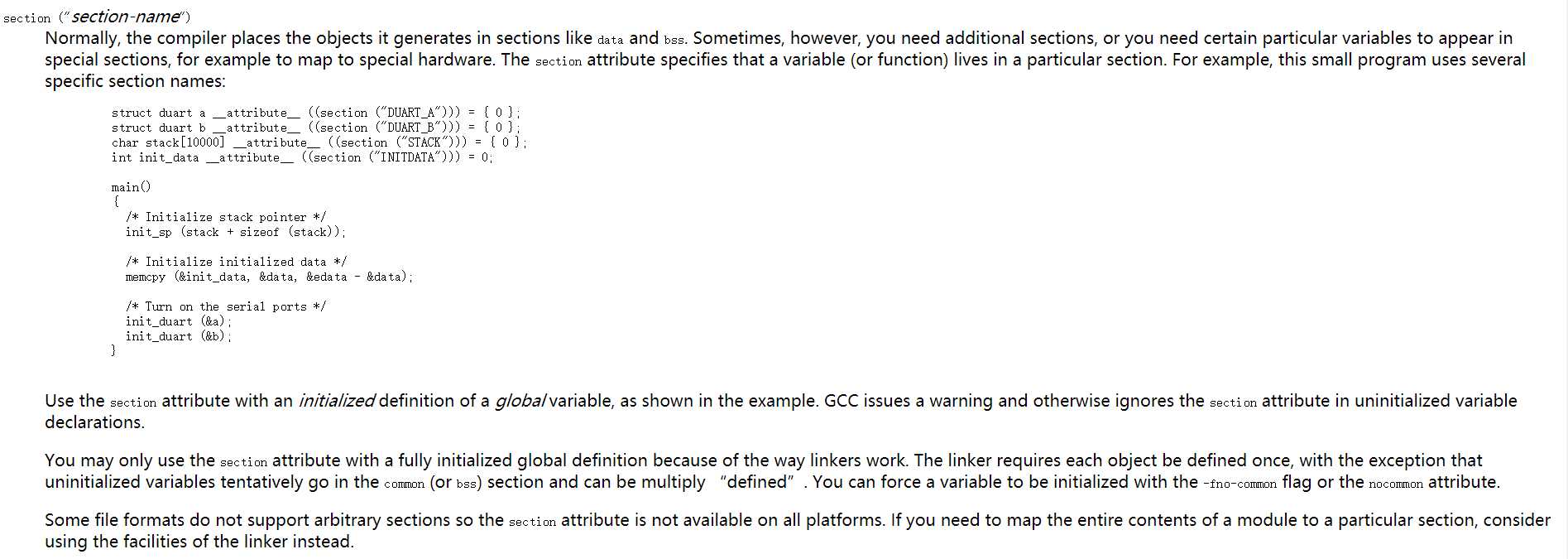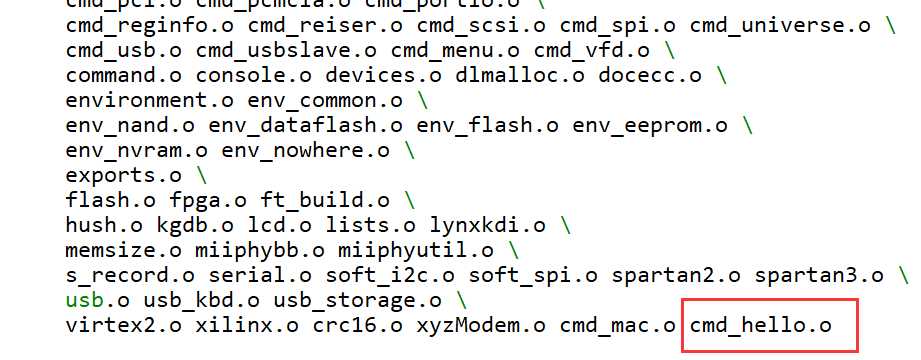之前一直在想,为什么没有人出一个完全从零写uboot和移植剪裁内核的教程,后来发现,确实这样的教程十分不容易,还有就是我们也没有必要花那么多时间去做别人已经做好的事情,所以,一般而言我们只用管怎么实现功能。(把更多的时间给音频、视频、图像类等的算法去更加符合经济效益)。
我们知道uboot的菜单中是支持很多指令的,我们今天就来增加一条hello指令。分析uboot知道,我们指令依托于一个 run_command函数,而且支持分号,比如 print;ls就会先执行print然后接着执行ls指令。其实uboot的命令和linux内核学习的时候一样,每个指令就是一个可执行程序。
struct cmd_tbl_s { char *name; /* Command Name */ int maxargs; /* maximum number of arguments */ int repeatable; /* autorepeat allowed? */ /* Implementation function */ int (*cmd)(struct cmd_tbl_s *, int, int, char *[]); char *usage; /* Usage message (short) */ #ifdef CFG_LONGHELP char *help; /* Help message (long) */ #endif #ifdef CONFIG_AUTO_COMPLETE /* do auto completion on the arguments */ int (*complete)(int argc, char *argv[], char last_char, int maxv, char *cmdv[]); #endif };
U_BOOT_CMD第一个参数是命令的名字,第二个参数是参数最长数字,第三个参数代表是否可重复,为1表示可重复,可重复就是在输入执行
了一次之后,不用再输入,直接回车就可以达到之前输入指令的效果。第四个参数是一个函数指针,指向要执行命令的函数体。第五个参数是
用法信息的简短说明。第六个参数是命令的长帮助信息。
U_BOOT_CMD( bootm, CFG_MAXARGS, 1, do_bootm, "bootm - boot application image from memory\n", "[addr [arg ...]]\n - boot application image stored in memory\n" "\tpassing arguments ‘arg ...‘; when booting a Linux kernel,\n" "\t‘arg‘ can be the address of an initrd image\n" #ifdef CONFIG_OF_FLAT_TREE "\tWhen booting a Linux kernel which requires a flat device-tree\n" "\ta third argument is required which is the address of the of the\n" "\tdevice-tree blob. To boot that kernel without an initrd image,\n" "\tuse a ‘-‘ for the second argument. If you do not pass a third\n" "\ta bd_info struct will be passed instead\n" #endif );
#define Struct_Section __attribute__ ((unused,section (".u_boot_cmd")))
#ifdef CFG_LONGHELP #define U_BOOT_CMD(name,maxargs,rep,cmd,usage,help) \ cmd_tbl_t __u_boot_cmd_##name Struct_Section = {#name, maxargs, rep, cmd, usage, help} #else /* no long help info */ #define U_BOOT_CMD(name,maxargs,rep,cmd,usage,help) \ cmd_tbl_t __u_boot_cmd_##name Struct_Section = {#name, maxargs, rep, cmd, usage} #endif /* CFG_LONGHELP */
CFG_LONGHELP 代表是否配置长的帮助消息,在我们的uboot中是支持的。关C语言的#和##就不再赘述了,字符串和连接符。
这里说一下:#define Struct_Section __attribute__ ((unused,section (".u_boot_cmd")))
unused:
This attribute, attached to a variable, means that the variable is meant to be possibly unused. GCC will not produce a warning for this variable.
该属性附加到变量上,意味着该变量可能未被使用。 GCC不会为这个变量产生警告。

参考连接:点击此处
在100ask目录下的lds文件中有:
. = .; __u_boot_cmd_start = .; .u_boot_cmd : { *(.u_boot_cmd) } __u_boot_cmd_end = .;
其中的u_boot_cmd段就是由上面的__attribute__指定的属性。
如果想实现一个简单的hello命令,只需要新建一个文件比如cmd_hello.c,common目录下的Makefile增加一个cmd_hello.o,

源文件放在common目录下。
cmd_hello.c:
#include <common.h> #include <watchdog.h> #include <command.h> #include <image.h> #include <malloc.h> #include <zlib.h> #include <bzlib.h> #include <environment.h> #include <asm/byteorder.h> int do_hello (cmd_tbl_t *cmdtp, int flag, int argc, char *argv[]) { int i; printf("hello world! %d\n",argc); for(i-0;i<argc;i++) { printf("argv[%d],%s\n",i,argv[i]); } return 0; } U_BOOT_CMD( hello, CFG_MAXARGS, 1, do_hello, "hello-just a test!\n", "hello long help\n" "do you know how to add a command?\n" );

就这样,就添加了一个命令了。
一般而言,uboot已经给我们写好了的东西,我们就不再多花时间去了解每一条语句了,先知道怎么用,试想,当初学C语言的时候,我们不也不知道printf怎么实现的吗,还不是能够学到今天这一步,要是当初一来学习就去研究printf怎么实现的输出到屏幕,那么一定坚持不了学习C语言,把时间花在更需要的地方。
